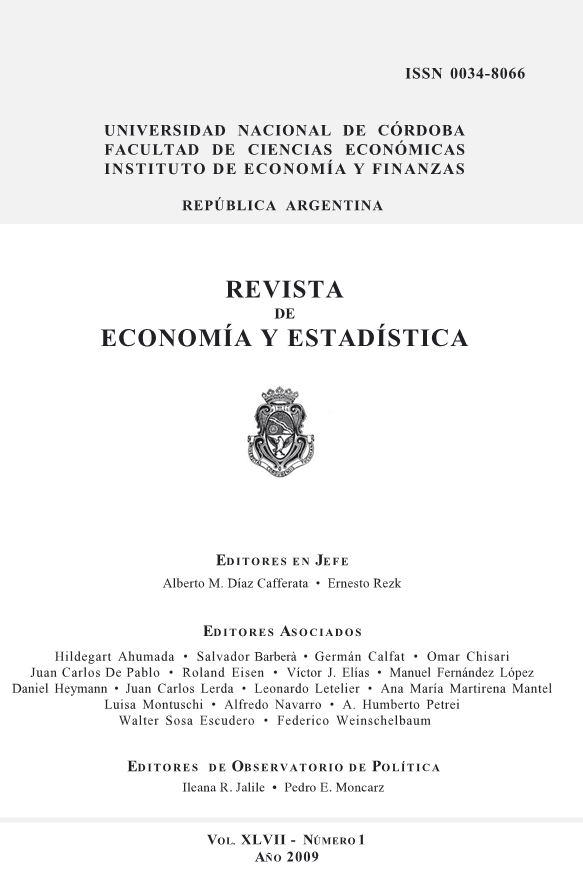Distribución y Movilidad de la Especialización Argentina en el Comercio Mundial de Agroalimentos: Un Estudio Dinámico
DOI:
https://doi.org/10.55444/2451.7321.2009.v47.n1.3857Keywords:
especialización comercial, ventajas competitivas reveladas, agroalimentos, distribución empírica, cadenas de MarkovAbstract
El siguiente trabajo presenta un estudio aplicado sobre la persistencia o movilidad dinámica de los patrones de especialización de Argentina dentro del sector agroalimentario durante el período 1996-2006. A los fines de obtener una variable aleatoria que cuantifique de manera global al desempeño comercial de un determinado producto o sector, se propone una metodología de medición basada en el indicador de Ventajas Comparativas Reveladas, estimando y analizando su distribución empírica, y con ello los cambios en la composición interna del sector. Para estudiar la convergencia en los patrones de especialización, se plantea un modelo dinámico basado en cadenas de Markov caracterizando el comportamiento interno de dicha distribución, obteniendo resultados que indican una ‘polarización’ dentro del sector.
Downloads
Downloads
Published
Issue
Section
License
Copyright (c) 2009 Rodrigo García Arancibia

This work is licensed under a Creative Commons Attribution-NonCommercial-NoDerivatives 4.0 International License.
Authors who have publications with this journal agree to the following terms:
Authors retain their copyright and grant the journal the right of first publication of their work, which is simultaneously subject to the Creative Commons Attribution-NonCommercial-NoDerivatives 4.0 International License that allows third parties to share the work provided that its author and first publication in this journal are indicated.
Authors may adopt other non-exclusive licensing arrangements for distribution of the published version of the work (e.g. depositing it in an institutional telematic archive or publishing it in a monographic volume) as long as the initial publication in this journal is indicated.
Authors are allowed and encouraged to disseminate their work via the Internet (e.g. in institutional telematic archives or on their website) before and during the submission process, which can lead to interesting exchanges and increase citations of the published work. (See The Open Access Effect)










